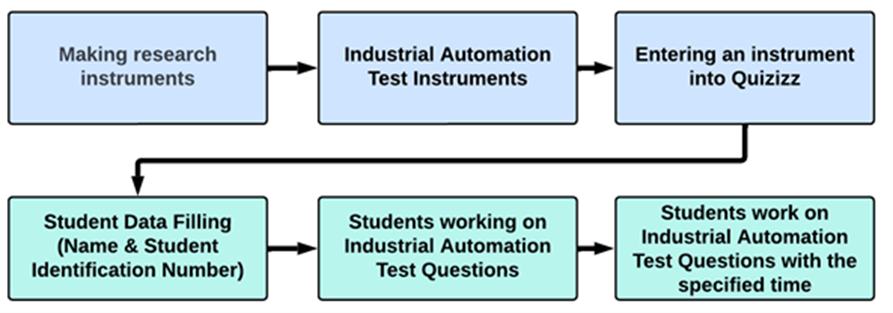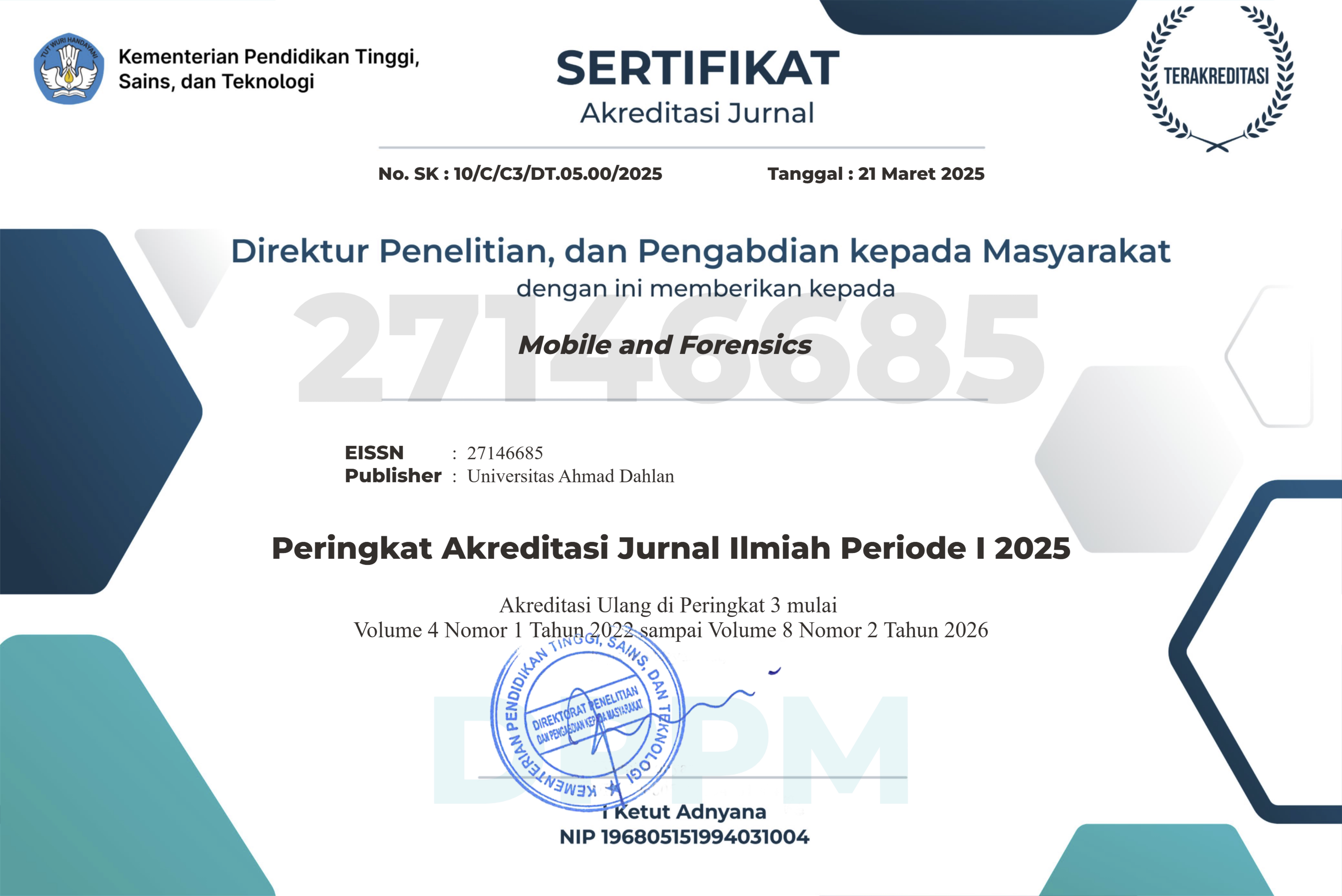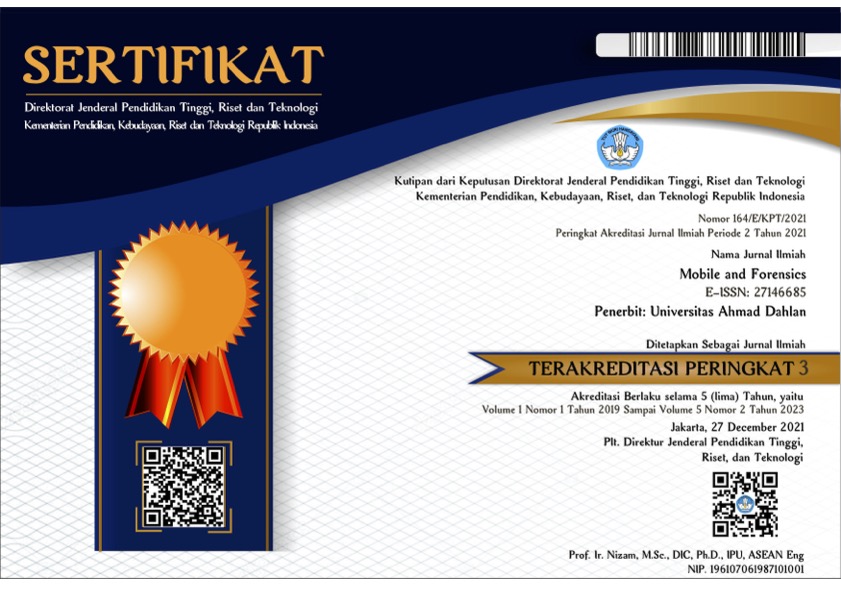Investigating Student Learning Outcome using Quizziz in Engineering Students
DOI:
https://doi.org/10.12928/mf.v4i2.7018Keywords:
Quizizz, Material Handling, Technology Identification, Industrial Automation, Vocational LearningAbstract
Material control throughout the manufacturing and distribution process is a cycle that needs to be considered in material handling and technology identification so that the production system in the automation industry runs according to its workflow. Industrial automation in vocational learning must be provided so that students have insight related to the field of automation. Vocational learning needs to use appropriate and modern media in the era of digitalization. The purpose of this study was to determine the performance of Quizizz media for industrial automation learning outcomes. The research design used was a one-group pretest posttest pre-experimental design. The sample group used was 66 students of industrial automation courses in the Mechanical Engineering Vocational Education Study Program. The research method used is the T test. The T test is used to determine the average posttest value. The level of statistical significance used is 5% (alpha). From the results of the study, it was found that there was an increase in insight related to transport equipment; storage systems; unitizing equipment; identification and tracking systems; and automatic identification and data capture (AIDC). The use of quizizz media has a role in active, interactive, fun, and modern learning in the era of digitalization.
References
P. Serdyukov, “Innovation in education: what works, what doesn’t, and what to do about it?,” Journal of Research in Innovative Teaching & Learning, vol. 10, no. 1, pp. 4–33, Apr. 2017, doi: 10.1108/jrit-10-2016-0007.
T. M. Lim and M. M. Yunus, “Teachers’ perception towards the use of Quizizz in the teaching and learning of English: A systematic review,” Sustainability (Switzerland), vol. 13, no. 11, Jun. 2021, doi: 10.3390/su13116436.
S. Zuhriyah and B. W. Pratolo, “Exploring students’ views in the use of quizizz as an assessment tool in english as a foreign language (efl) class,” Universal Journal of Educational Research, vol. 8, no. 11, pp. 5312–5317, Nov. 2020, doi: 10.13189/ujer.2020.081132.
M. Agustia, C. Aprilia, J. Sari, D. Hikmah, and R. Risnita, “Using Quizizz in Learning Assesment with Science Literacy Oriented in Science Learning,” International Journal of Engineering, Science and Information Technology, vol. 1, no. 1, pp. 86–90, Nov. 2021, doi: 10.52088/ijesty.v1i1.213.
S. Saripudin, S. Sumarto, E. A. Juanda, A. G. Abdullah, and A. Ana, “Vocational school teachers’ perceptions of e-learning during covid-19,” Journal of Engineering Education Transformations, vol. 34, no. Special Issue, 2020, doi: 10.16920/JEET/2020/V34I0/157844.
Gutiérrez, I., Sánchez, M. M., Castañeda, L., & Prendes, P. (2017). Learning e-Learning Skills for Vocational Training Using e-Learning: The Experience Pilonting the (e)VET2EDU Project Course. International Journal of Information and Education Technology, 7(4), 301–308. https://doi.org/10.18178/ijiet.2017.7.4.885
Im, T. (2021). Online and blended learning in vocational training institutions in South Korea. Knowledge Management and E-Learning, 13(2), 194–208. https://doi.org/10.34105/j.kmel.2021.13.011
Nurtanto, M., Sofyan, H., & Pardjono, P. (2021). E-learning based autocad 3d interactive multimedia on vocational education (Ve) learning. Journal of Engineering Education Transformations, 34(4), 97–103. https://doi.org/10.16920/jeet/2021/v34i4/155014
S. A. K. Shdaifat, N. A. K. Shdaifat, and L. A. Khateeb, “The Reality of Using E-Learning Applications in Vocational Education Courses During COVID 19 Crisis from the Vocational Education Teachers’ Perceptive in Jordan,” International Education Studies, vol. 13, no. 10, p. 105, Sep. 2020, doi: 10.5539/ies.v13n10p105.
Halvoník, D., & Kapusta, J. (2020). Framework for e-learning materials optimization. International Journal of Emerging Technologies in Learning, 15(11), 67–77. https://doi.org/10.3991/IJET.V15I11.12721
Hashim, M. H. M. (2015). Using technology and instructional e-material among technical teacher and student into teaching and learning: A qualitative case study. International Education Studies, 8(3), 175–180. https://doi.org/10.5539/ies.v8n3p175
A. Firmansyah, A. F. Samsudin, R. Y. Aqmal, and A. Hadian, “E-Learning Methods Impact in Vocational Education,” Invotec, vol. 17, no. 1, 2021.
Yaw Obeng, A., & Coleman, A. (2020). Evaluating the effects and outcome of technological innovation on a web-based e-learning system. Cogent Education, 7(1). https://doi.org/10.1080/2331186X.2020.1836729
Saleem, A. N., Noori, N. M., & Ozdamli, F. (2022). Gamification Applications in E-learning: A Literature Review. Technology, Knowledge and Learning, 27(1), 139–159. https://doi.org/10.1007/s10758-020-09487-x
Bennani, S., Maalel, A., & Ben Ghezala, H. (2022, March 1). Adaptive gamification in E-learning: A literature review and future challenges. Computer Applications in Engineering Education. John Wiley and Sons Inc. https://doi.org/10.1002/cae.22477
S. B. Asplund, N. Kilbrink, and H. Asghari, “Visualising the intended practical doing: Future-oriented movements in swedish vocational school workshop settings,” International Journal for Research in Vocational Education and Training, vol. 8, no. 2, pp. 160–185, 2021, doi: 10.13152/IJRVET.8.2.2.
M. R. A. Bakar, N. A. M. Razali, M. Wook, M. N. Ismail, and T. M. T. Sembok, “Exploring and Developing an Industrial Automation Acceptance Model in the Manufacturing Sector Towards Adoption of Industry4.0,” Manufacturing Technology, vol. 21, no. 4, pp. 434–446, 2021, doi: 10.21062/mft.2021.055.
F. Salewski and R. Schmidt, “Teaching industrial automation: An approach for a practical lab course,” in 2015 Workshop on Embedded and Cyber-Physical Systems Education, WESE 2015 - Proceedings, 2015. doi: 10.1145/2832920.2832921.
M. Asif et al., “Industrial automation information analogy for smart grid security,” Computers, Materials and Continua, vol. 71, no. 2, 2022, doi: 10.32604/cmc.2022.023010.
V. Acharya, S. K. Sharma, and S. Kumar Gupta, “Analyzing the factors in industrial automation using analytic hierarchy process,” Computers and Electrical Engineering, vol. 71, 2018, doi: 10.1016/j.compeleceng.2017.08.015.
W. J. Creswell and J. D. Creswell, Research Design: Qualitative, Quantitative and Mixed Methods Approaches, vol. 53, no. 9. 2018.

Downloads
Published
Issue
Section
License
Copyright (c) 2022 Rochmad Novian Inderanata

This work is licensed under a Creative Commons Attribution-ShareAlike 4.0 International License.
Start from 2019 issues, authors who publish with JURNAL MOBILE AND FORENSICS agree to the following terms:
- Authors retain copyright and grant the journal right of first publication with the work simultaneously licensed under a Creative Commons Attribution License (CC BY-SA 4.0) that allows others to share the work with an acknowledgment of the work's authorship and initial publication in this journal.
- Authors are able to enter into separate, additional contractual arrangements for the non-exclusive distribution of the journal's published version of the work (e.g., post it to an institutional repository or publish it in a book), with an acknowledgment of its initial publication in this journal.
- Authors are permitted and encouraged to post their work online (e.g., in institutional repositories or on their website) prior to and during the submission process, as it can lead to productive exchanges, as well as earlier and greater citation of published work.

This work is licensed under a Creative Commons Attribution-ShareAlike 4.0 International License.












 Mobile and Forensics (MF)
Mobile and Forensics (MF)